Vous voulez dévaler les pistes cet hiver mais ne savez pas quel équipement correspond à votre style ? Voilà le topo : les setups Alpine Touring (AT) sont parfaits pour les aventures en hors-piste, offrant montées et descentes palpitantes. Mais ils sont chers, lourds, et nécessitent une formation avalanche. Les skis et snowboards de station ? Parfaits pour les pistes damées mais avec un équipement encombrant et le coût des forfaits. Voici Snowfeet*, l'option légère, économique, que vous pouvez glisser dans un sac à dos pour un plaisir rapide et sans tracas partout où il y a de la neige.
Aperçu rapide de vos options :
- Alpine Touring (AT) : Orienté hors-piste, haute performance, mais cher et complexe.
- Skis/Snowboards de station : Idéaux pour les pistes damées, coûteux, et liés aux horaires des stations.
- Produits Snowfeet* : Compacts, abordables, faciles à utiliser, et fonctionnent presque partout.
Envie de liberté pour explorer ? Snowfeet* pourrait bien devenir votre nouvel équipement d'hiver préféré. Décortiquons tout ça.
Comment choisir votre premier setup de ski Alpine Touring avec SkiEssentials.com - Chaussures, fixations et skis
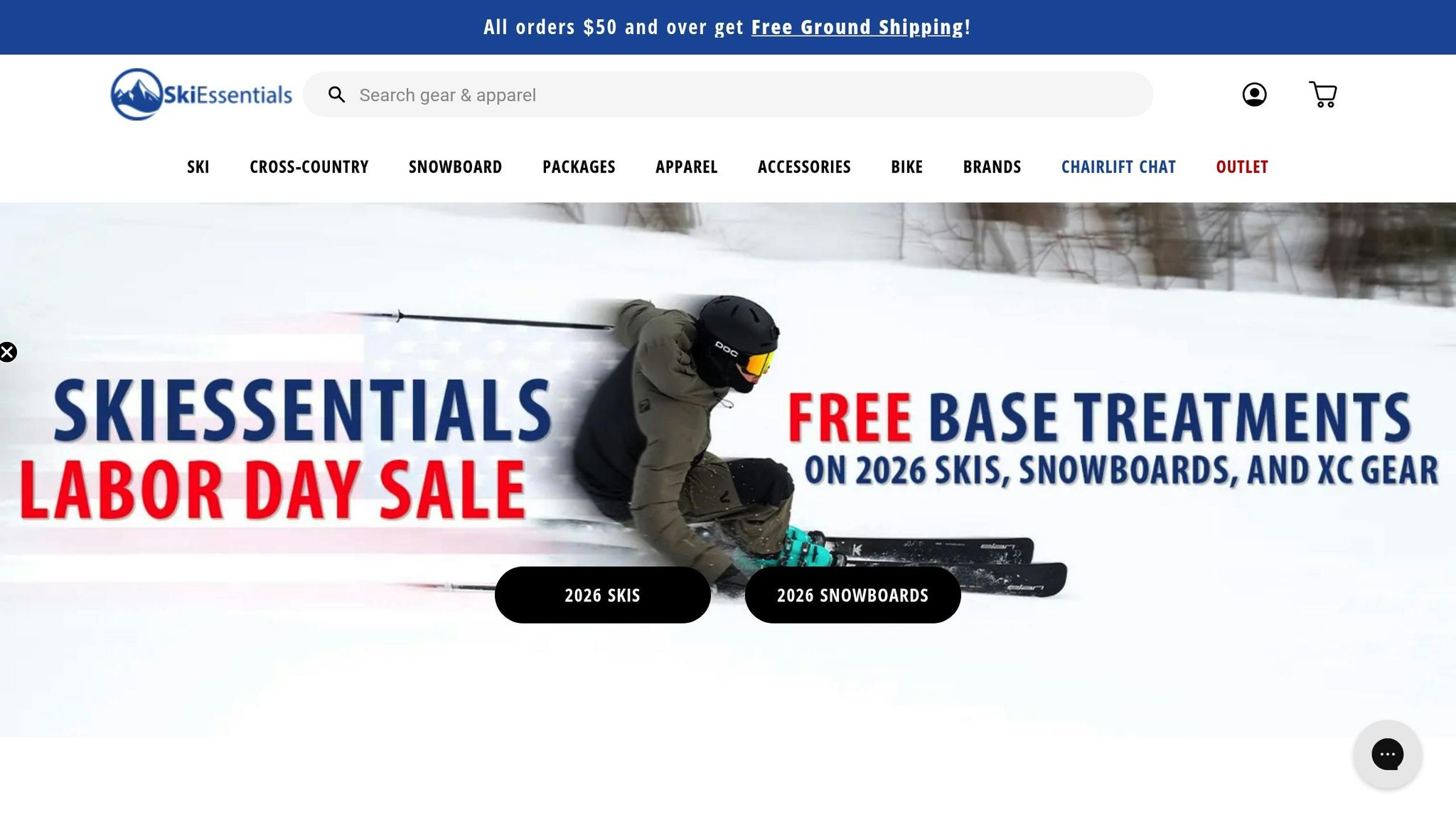
1. Setups de ski Alpine Touring (AT)
Les setups Alpine Touring (AT) sont le choix privilégié pour ceux qui recherchent la poudreuse vierge en hors-piste. Ils combinent des skis, fixations et chaussures spécialisés conçus pour gérer à la fois les montées et les descentes palpitantes.
Performance
En mode talon fixe, les setups AT offrent une puissance solide en descente et un contrôle d'arête fiable, ce qui en fait une excellente option pour les pentes raides et ouvertes. Cependant, la montée en peau demande une endurance cardiovasculaire sérieuse, et les skis plus longs et larges peuvent sembler moins maniables dans les passages étroits. Bien que ces setups soient conçus pour la performance, ils sont plus complexes que le matériel traditionnel.
Portabilité
Si vous partez avec un équipement AT, préparez-vous à porter un poids supplémentaire. La liste du matériel n'est pas une blague - skis, chaussures, fixations, bâtons, équipement de sécurité avalanche et peaux de phoque s'additionnent. Ce volume peut compliquer le transport, surtout si vous voyagez vers votre destination de ski.
Coût
Le ski de randonnée (AT) n'est pas donné. Au-delà des skis, fixations et chaussures, il faut investir dans des équipements de sécurité comme les balises, pelles et sondes. N'oubliez pas les coûts récurrents comme l'entretien des fixations et le remplacement des peaux de phoque quand elles s'usent. C'est un investissement, mais pour beaucoup, la poudreuse vierge vaut chaque centime.
Flexibilité
Ces équipements brillent lors de longues randonnées alpines et sur des terrains ouverts et raides. Mais ils sont moins polyvalents pour les pistes damées ou les conditions météorologiques imprévisibles. Les risques d'avalanches et les compétences techniques requises les destinent surtout aux skieurs expérimentés prêts à relever un défi.
2. Skis et Snowboards Traditionnels
Les skis et snowboards traditionnels sont le choix privilégié dans les stations américaines, des sommets enneigés du Vermont aux imposantes Rocheuses du Colorado. Ils existent depuis toujours, offrant une expérience éprouvée que la plupart des gens connaissent et en laquelle ils ont confiance.
Performance
Sur les pistes damées, les skis et snowboards traditionnels excellent. Les skis alpins sont parfaits pour tracer des lignes nettes et adhérer fermement sur la neige tassée, tandis que les snowboards offrent des descentes fluides dans la poudreuse et des virages rapides et réactifs sur les surfaces dures. Mais voilà le hic : leurs performances sont quasiment liées à la station. S'éloigner des sentiers bien entretenus ? C'est là que ça se complique.
Portabilité
Soyons honnêtes - transporter cet équipement n'est pas une partie de plaisir. La taille et le poids des skis et snowboards traditionnels rendent le transport compliqué. Que vous chargiez la voiture ou que vous naviguiez dans un parking enneigé, gérer tout ce matériel encombrant peut ressembler à une séance d'entraînement avant même d'arriver sur les pistes.
Coût
Il n'y a pas de quoi enjoliver la réalité - les équipements traditionnels coûtent cher. Entre l'achat du matériel, les forfaits de remontées mécaniques, les passes saisonniers et l'entretien, les dépenses s'accumulent rapidement.
Flexibilité
L'équipement traditionnel est fantastique pour les pistes damées, mais il manque de polyvalence. Vous êtes limité aux frontières des stations et à leurs horaires, ce qui peut freiner les aventures spontanées.
Ensuite, nous allons explorer comment les produits Snowfeet* révolutionnent les choses, offrant une alternative légère et pratique à l'équipement traditionnel. Restez à l'écoute !
sbb-itb-17ade95
3. Produits Snowfeet*
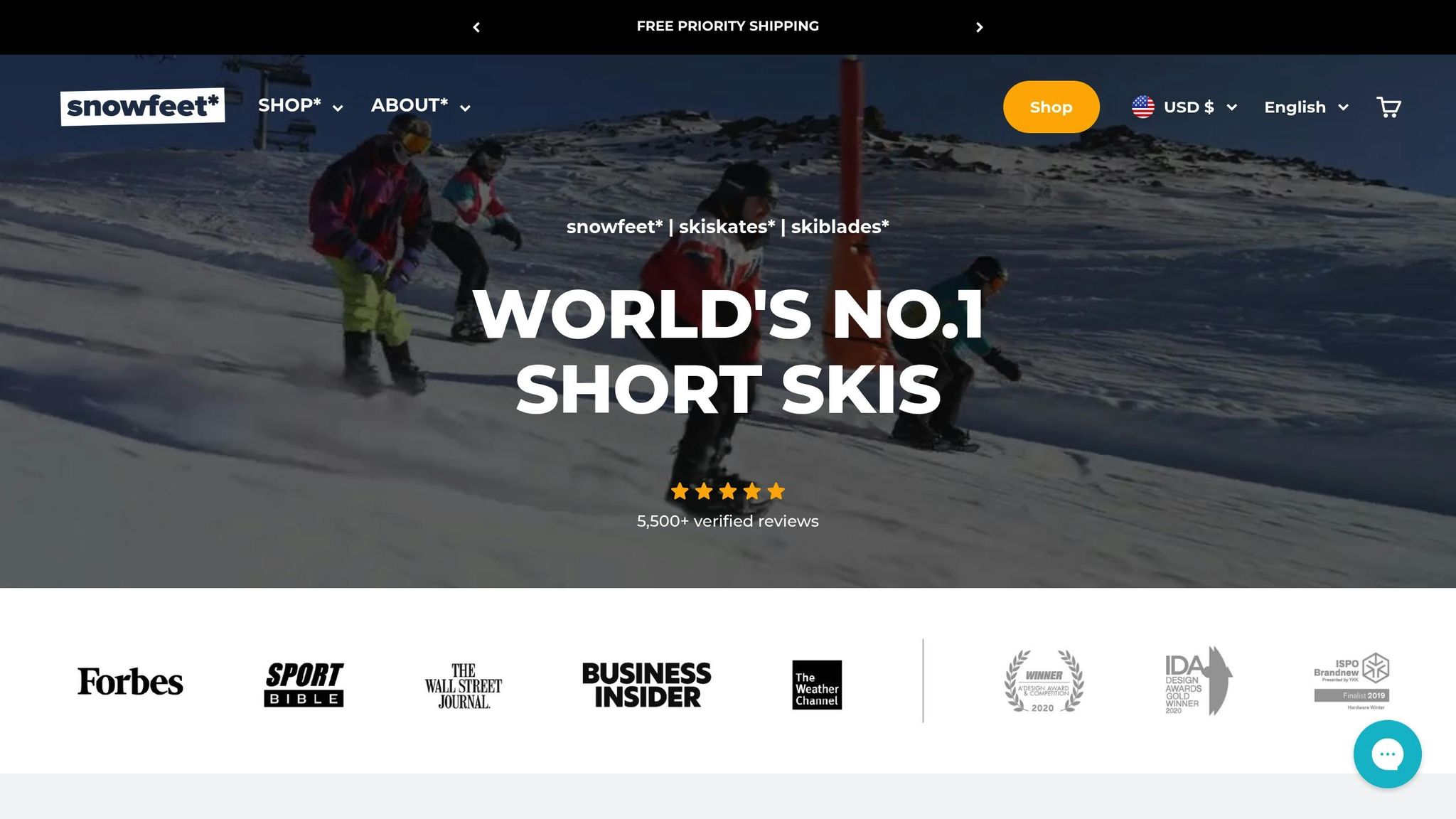
Snowfeet* bouscule le monde du ski en remettant en question l'idée traditionnelle que des skis plus longs signifient toujours de meilleures performances. Ils proposent plutôt une approche fraîche et plus agile de l'équipement de sports d'hiver, conçue pour la simplicité et le plaisir.
Performance
Les mini ski skates et skiblades Snowfeet* sont conçus pour affronter tous types de terrains enneigés - qu'il s'agisse de pistes damées, de poudreuse fraîche, ou même de votre propre jardin. Avec des longueurs allant de 38 à 120 cm, ces skis courts vous permettent d'effectuer des virages rapides et précis qu'aucun ski traditionnel ne peut égaler.
Le meilleur dans tout ça ? Ils sont super faciles à apprendre. Vous pouvez associer l'équipement Snowfeet* à des chaussures d'hiver classiques, des boots de snowboard ou des chaussures de ski, ce qui en fait un excellent choix pour les débutants comme pour les skieurs expérimentés.
Portabilité
Si vous en avez assez de trimballer un équipement de ski encombrant, Snowfeet* est là pour vous. Les Mini Ski Skates de 38 cm sont assez petits pour tenir dans un sac à dos, donc pas besoin de barres de toit ou de rangement spécial. Leur design léger les rend parfaits pour des aventures spontanées, que vous dévaliez une colline locale ou partiez pour un week-end.
Coût
Le matériel Snowfeet* est économique comparé aux équipements de ski traditionnels. Les Mini Ski Skates commencent à 150 $, avec des modèles PRO à 199 $. Si vous cherchez quelque chose de plus avancé, leurs Skiblades premium et Short Skis sont proposés autour de 690 $ - toujours une excellente affaire pour toute la polyvalence qu'ils offrent.
Flexibilité
Les produits Snowfeet* vous donnent la liberté de profiter des sports d'hiver presque partout où il y a de la neige. Des pistes de ski et parcs aux sentiers et même votre jardin, ces mini-skis ne vous attachent pas aux stations ou aux horaires d'ouverture. Que vous ayez envie d'une session rapide sur la colline du quartier ou d'explorer un sentier enneigé, Snowfeet* s'adapte facilement à vos plans.
Ce qui est encore plus cool ? Snowfeet* est en tête pour populariser le skiskate - un sport qu'ils espèrent voir un jour aux Jeux Olympiques. Avec une gamme de modèles adaptés à différents niveaux et préférences, des Mini Ski Skates ultra-portables aux Short Skis plus traditionnels, Snowfeet* vise à rendre les sports d'hiver plus accessibles, polyvalents et amusants.
Avantages et Inconvénients
Quand il s'agit de choisir son matériel de sports d'hiver, comprendre les forces et faiblesses de chaque option peut faire toute la différence dans vos aventures enneigées. Décomposons cela.
Les équipements de ski de randonnée (AT) sont un choix privilégié pour les explorateurs hors-piste. Ces setups permettent de monter avec des peaux puis de basculer en mode descente, parfait pour les alpinistes et amateurs de hors-piste. Mais il y a un hic : ils ont un prix élevé, tant pour le matériel que pour les compétences à maîtriser. De plus, l'équipement AT est souvent lourd et prend beaucoup de place.
Les skis et snowboards traditionnels excellent sur les pistes damées. Des décennies d'améliorations de conception les rendent incroyablement stables et précis, surtout pour les virages à grande vitesse. Cependant, skier en station implique des dépenses supplémentaires comme les forfaits, les déplacements et l'entretien. Et ces équipements ne sont pas vraiment portables, rendant les sorties spontanées un peu compliquées. Vous êtes aussi lié aux horaires des stations et aux zones de ski désignées.
Parlons maintenant des produits Snowfeet*. Ils apportent quelque chose de nouveau : du fun, de l'accessibilité et de la liberté. Avec un prix abordable, ils rencontrent un franc succès auprès des familles et des amateurs de sports d'hiver occasionnels. Leur design compact signifie que vous pouvez les glisser dans un sac à dos et partir vers la colline enneigée la plus proche - pas de forfaits de remontée, pas de matériel encombrant. De plus, la courbe d'apprentissage est très douce. Snowfeet* fonctionnent avec vos chaussures d'hiver habituelles, donc pas besoin de bottes spéciales ni d'ajustements compliqués. Ils sont légers, faciles à ranger, et offrent une expérience agile et maniable difficile à égaler avec les équipements traditionnels.
Voici un rapide comparatif pour tout résumer :
| Caractéristique | Ski de randonnée alpine | Skis/ Snowboards traditionnels | Snowfeet* |
|---|---|---|---|
| Coût | Élevé | Modéré | Faible |
| Poids | Lourd | Lourd | Super léger |
| Portabilité | Encombrant, nécessite des barres de toit | Difficile à transporter | Se glisse dans un sac à dos |
| Courbe d'apprentissage | Raide | Modéré à raide | Facile |
| Accès au terrain | Hors-piste | Stations | Partout où il y a de la neige |
| Compatibilité des chaussures | Chaussures AT requises | Chaussures de ski/snowboard requises | Compatible avec chaussures d'hiver ou chaussures de ski/snowboard |
| Besoins de stockage | Demande beaucoup d'espace | Nécessite un espace de stockage important | Stockage minimal |
| Niveau de compétence | Avancé, avec formation avalanche | Du débutant à l'avancé | Adapté aux débutants |
| Facteurs d'exploitation | Dépendant de la météo et des avalanches | Lié aux horaires des stations | Liberté totale |
Le point fort ici ? Snowfeet*. Contrairement aux équipements AT et traditionnels qui nécessitent souvent une planification minutieuse - que ce soit pour vérifier les conditions d'avalanche ou réserver un séjour en station - Snowfeet* vous permettent de plonger dans le plaisir hivernal dès que l'envie vous prend. Il suffit de prendre votre matériel, d'enfiler vos chaussures habituelles, et de partir sur la neige.
Un autre avantage ? L'entretien est un jeu d'enfant. Alors que les équipements AT et traditionnels exigent souvent un réglage professionnel et des soins, Snowfeet* prônent la simplicité. Une rapide séance de fartage suffit pour les garder prêts à l'emploi. Cela signifie moins de temps à se soucier de l'entretien et plus de temps à profiter de la glisse.
Conclusion
Choisir son équipement d'hiver dépend vraiment du type d'expérience que vous recherchez. Si vous êtes passionné par les aventures hors-piste, les équipements de ski de randonnée alpine sont faits pour vous. Gardez simplement à l'esprit qu'ils demandent un engagement sérieux - pensez à la formation sur la sécurité avalanche et à un investissement conséquent dans le matériel.
Comme nous l'avons vu plus tôt, chaque type d'équipement a ses avantages. Les skis et snowboards traditionnels restent le choix numéro un pour les amateurs de stations, offrant une vitesse et un contrôle imbattables sur les pistes damées. Mais ils entraînent des dépenses récurrentes qui peuvent vite s'accumuler. C'est là qu'une alternative innovante change la donne.
Pour tous ceux qui cherchent un moyen abordable et sans tracas de profiter de la neige, les produits Snowfeet* changent la donne. À partir de seulement 150 $, leurs Mini Ski Skates facilitent la sortie pour les familles et les amateurs occasionnels de neige. De plus, ils fonctionnent avec des chaussures d'hiver ordinaires, vous pouvez donc les prendre et aller sur la neige - que ce soit dans un parc, sur une colline proche ou même dans votre jardin.
Voici un aperçu rapide des options :
- Équipements de ski de randonnée alpine : Parfaits pour les passionnés de hors-piste prêts à investir dans la formation et le matériel spécialisé.
- Skis et snowboards traditionnels : Meilleurs pour les amateurs de stations qui privilégient la vitesse et possèdent déjà le matériel.
- Snowfeet* : Idéal pour ceux qui veulent un équipement léger, portable, facile à utiliser et parfait pour des aventures hivernales spontanées.
Alors que le ski de randonnée alpine et les équipements traditionnels excellent dans des scénarios spécifiques, Snowfeet* se distingue par sa portabilité et sa simplicité. Dans un pays où les stations de ski ne sont pas toujours à proximité, Snowfeet* transforme n'importe quelle colline enneigée en votre terrain de jeu personnel.
FAQ
Que devraient savoir les débutants sur le ski de randonnée alpine (AT), notamment en ce qui concerne la sécurité et le coût ?
Si vous débutez en ski de randonnée alpine (AT), votre priorité absolue doit toujours être la sécurité. Cela signifie prendre le temps d'apprendre les risques d'avalanche, de se familiariser avec le terrain et de s'assurer que vous disposez du bon équipement de sécurité. Des essentiels comme les détecteurs d'avalanche, les pelles et les sondes ne sont pas de simples accessoires - ce sont des sauveurs en cas d'urgence.
Une autre chose à garder à l'esprit est le coût. Les équipements de ski AT peuvent devenir coûteux, en raison du matériel spécialisé impliqué, ce qui peut rendre difficile pour les débutants de se lancer. C'est là que Snowfeet entre en jeu. Leur équipement est compact, léger et bien plus abordable que le matériel AT traditionnel. De plus, il est plus facile à utiliser et beaucoup moins intimidant, ce qui en fait un choix génial pour quiconque souhaite s'initier aux sports d'hiver sans se ruiner ni affronter une courbe d'apprentissage abrupte.
Comment les produits Snowfeet se comparent-ils aux skis et snowboards traditionnels pour les débutants en termes de facilité d'utilisation et de polyvalence ?
Le matériel Snowfeet est une option fantastique pour les débutants, offrant un niveau de simplicité et de flexibilité que les skis et snowboards traditionnels ne peuvent tout simplement pas égaler. Avec leur design léger et compact (mesurant entre 15 et 47 pouces), ils sont super faciles à manier. Cela signifie moins de fatigue, un apprentissage plus rapide et un début beaucoup plus agréable dans les sports d'hiver.
Contrairement au matériel traditionnel plus encombrant, Snowfeet est portable, facile à utiliser et beaucoup moins intimidant pour les débutants. Leur longueur plus courte les rend plus faciles à contrôler, tandis que leur design simple aide à réduire les chutes et frustrations. Que vous dévaliez des pistes damées ou restiez sur un terrain plus plat et facile, Snowfeet rend simple et amusant l'entrée dans les sports d'hiver sans les tracas habituels.
Que dois-je prendre en compte en choisissant entre les skis Alpine Touring, les skis ou snowboards traditionnels, et Snowfeet* pour les sports d'hiver ?
Quand vous pesez vos options entre les setups Alpine Touring (AT), les skis ou snowboards traditionnels, et Snowfeet*, il vaut la peine de penser à la portabilité, la facilité d'utilisation, le coût et le type de terrain que vous allez affronter. Snowfeet* brille comme un choix léger et compact qui se fixe sur des chaussures d'hiver classiques. Cela en fait un excellent choix pour les débutants, les skieurs occasionnels ou quiconque veut une façon amusante et sans prise de tête de profiter des pistes. D'un autre côté, les setups AT et les skis ou snowboards traditionnels impliquent plus de matériel et peuvent être un peu compliqués à transporter.
Le coût est une autre grande considération. Les équipements traditionnels nécessitent souvent un investissement important - fixations, chaussures, bâtons, tout y passe. Pendant ce temps, Snowfeet* propose une option tout-en-un économique. De plus, ils sont super polyvalents. Que vous glissiez en ville, dévaliez de petites pentes ou affrontiez même des plaques de glace, Snowfeet* gère tout. Le matériel traditionnel, en revanche, est mieux adapté aux pistes damées et au ski plus avancé.
Si vous cherchez quelque chose de fun, portable et simple, Snowfeet* offre une façon moderne et sans tracas de profiter des sports d'hiver.







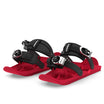
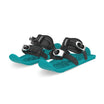












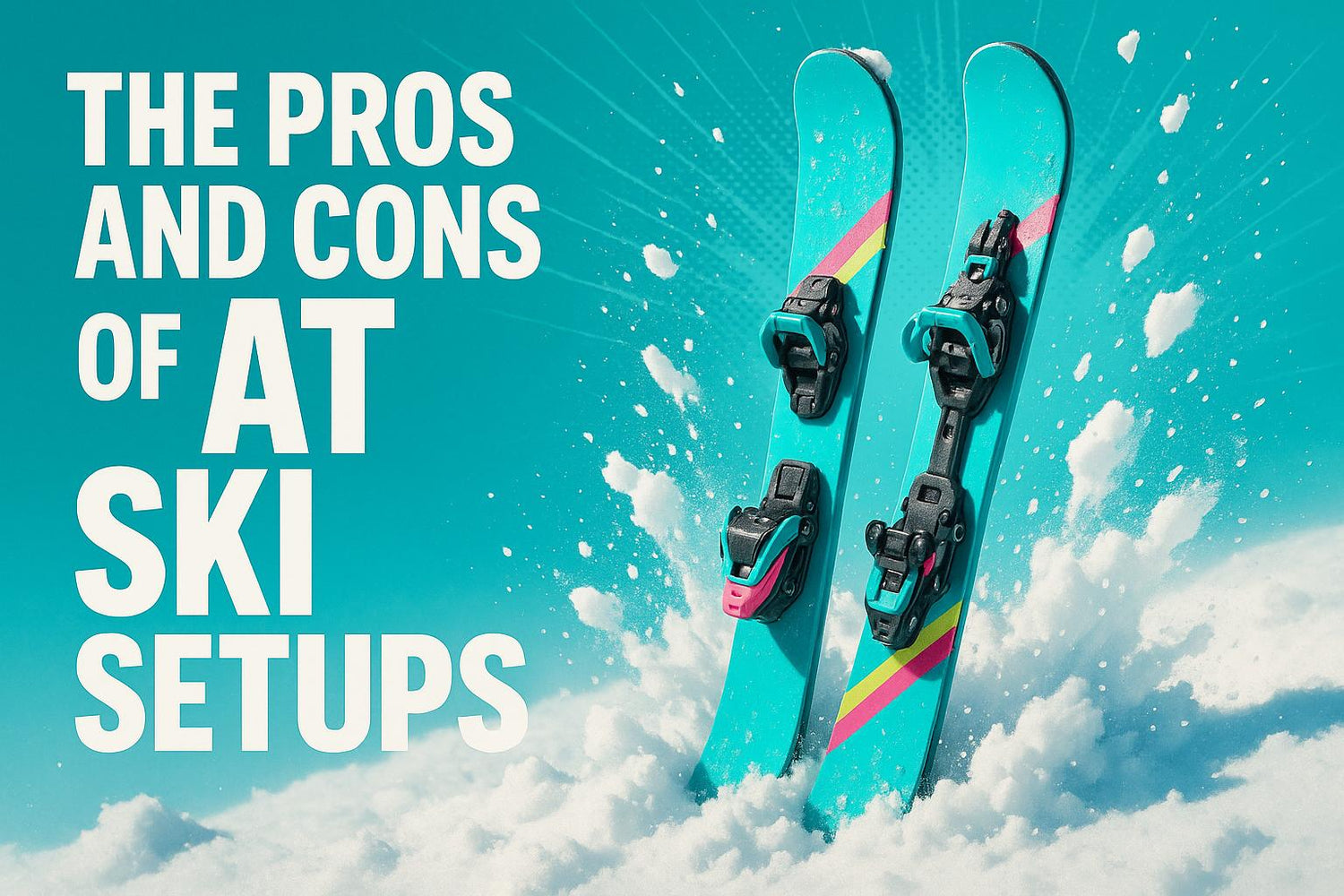
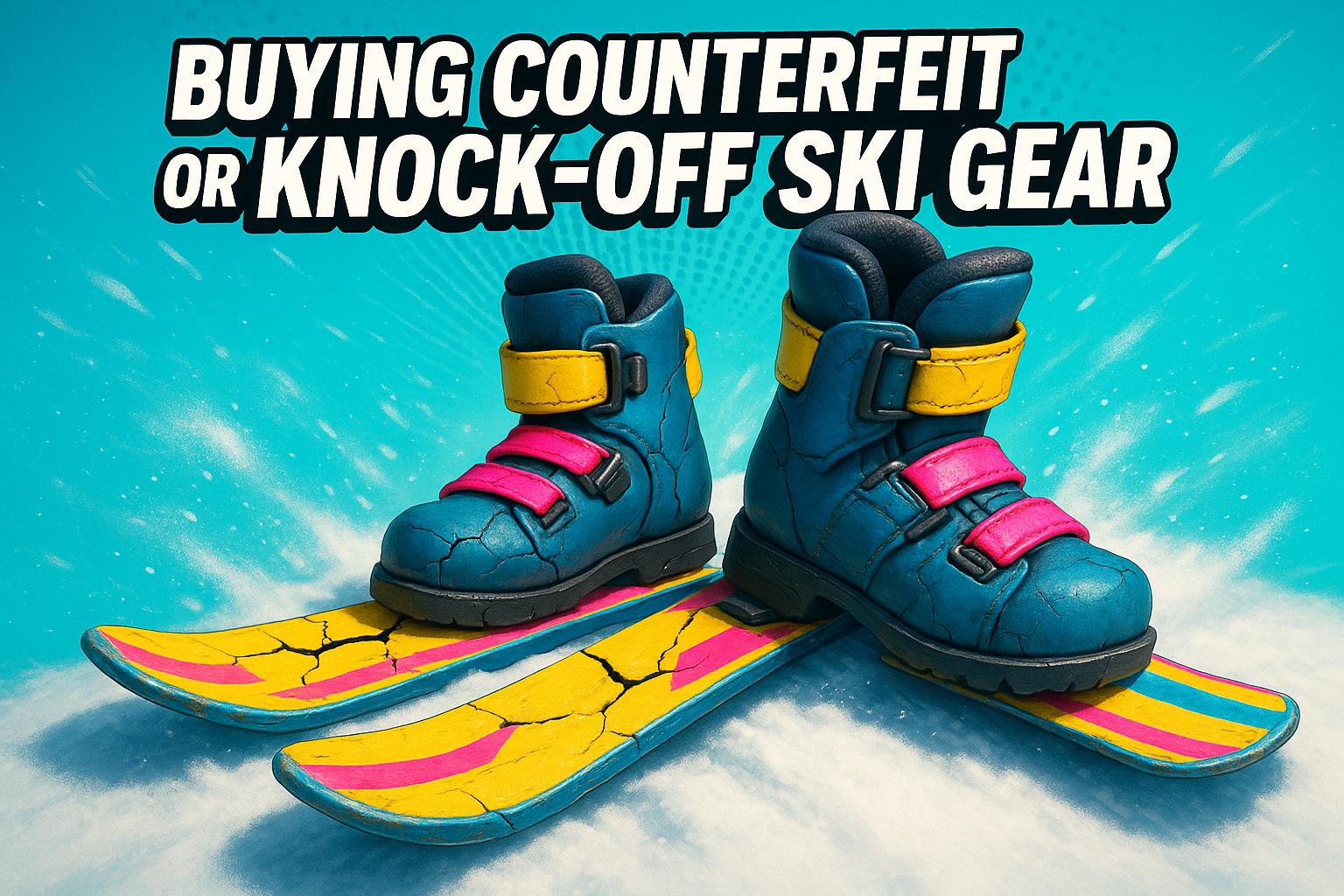





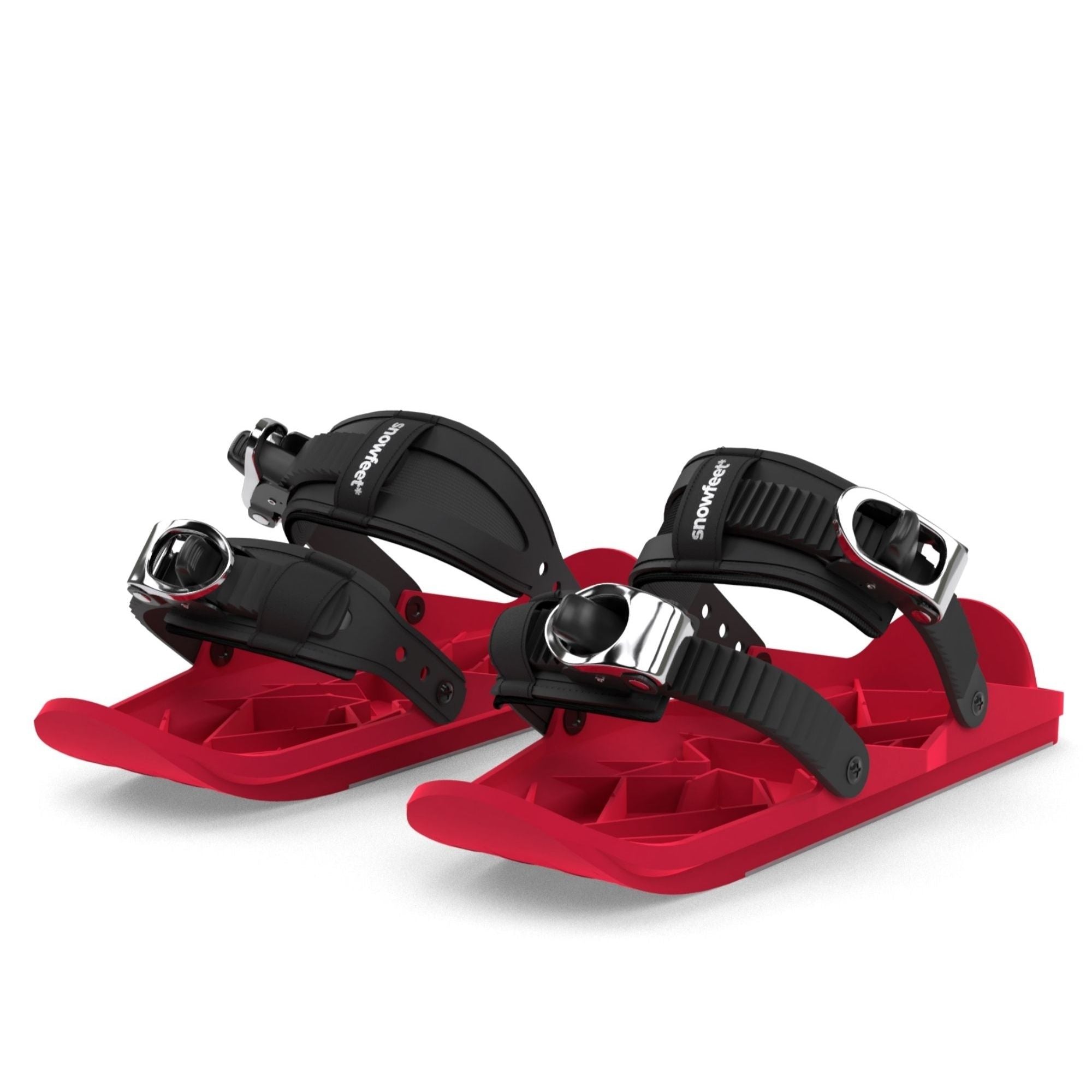
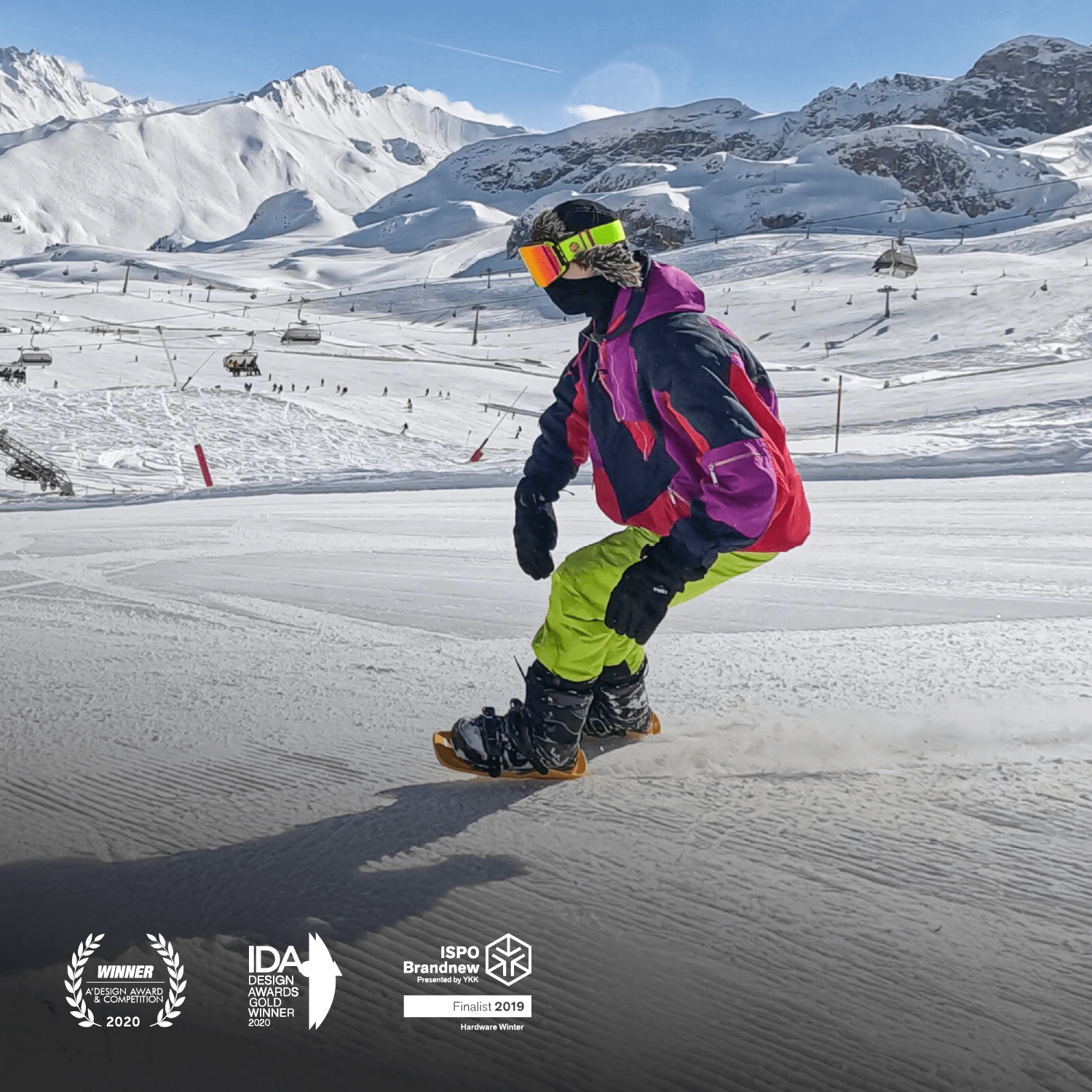




Laisser un commentaire
Ce site est protégé par hCaptcha, et la Politique de confidentialité et les Conditions de service de hCaptcha s’appliquent.